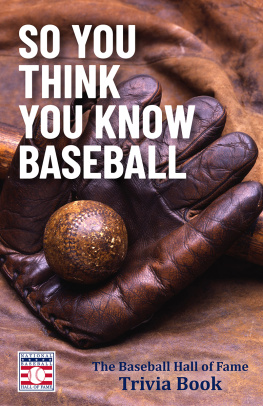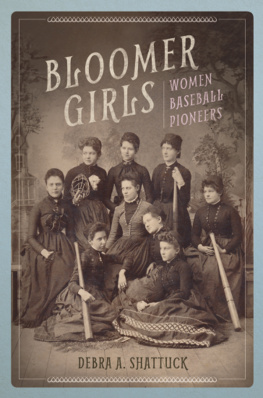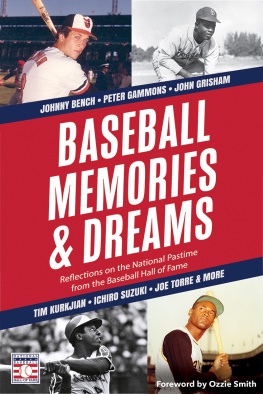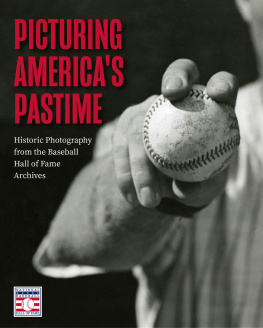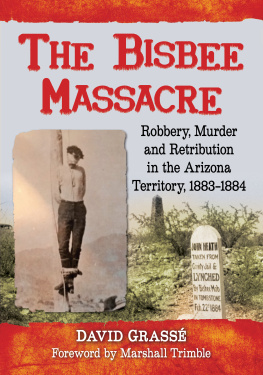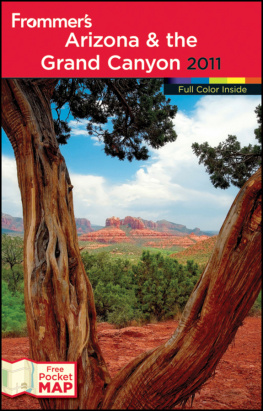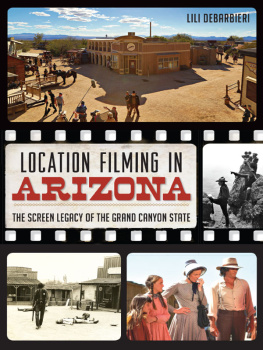
Baseball in Territorial Arizona
A History, 18631912
John Darrin Tenney

McFarland & Company, Inc., Publishers
Jefferson, North Carolina
LIBRARY OF CONGRESS CATALOGUING DATA ARE AVAILABLE
BRITISH LIBRARY CATALOGUING DATA ARE AVAILABLE
e-ISBN: 978-1-4766-2144-9
2016 John D. Tenney. All rights reserved
No part of this book may be reproduced or transmitted in any form or by any means, electronic or mechanical, including photocopying or recording, or by any information storage and retrieval system, without permission in writing from the publisher.
On the cover: 4th Cavalry baseball club of Fort Huachuca at Fort Lowell on December 3, 1887 (Arizona Historical Society)
McFarland & Company, Inc., Publishers
Box 611, Jefferson, North Carolina 28640
www.mcfarlandpub.com
Preface
This book presents the history of baseball in the Arizona Territory between 1863 and 1912. I became interested in researching this topic after reading through the Mining Towns to Major Leagues: A History of Arizona Baseball, published by the Society for American Baseball Research (SABR) in conjunction with its 1999 annual convention, held in Scottsdale.
I am proudly a member of the Flame Delhi Chapter of SABR, made up of members from throughout Arizona. Upon glancing through this publication, I noticed it was merely a collection of articles, with each one being less than five pages long. The first article, Baseball in the Arizona Territory, 18631912, was written by historian Jeb Stuart Rosebrook. After reading its four pages with much interest, I came away with more questions than the article had answered. I was determined to expand on the material presented, in a way that would broaden a readers understanding of the subject matter but in an entertaining way. Eventually I decided to write a book.
As a starting point, I consulted broad topical resources such as the Historical Atlas of Arizona, second edition, written by Henry P. Walker and Don Bufkin, to draw necessary clues as to the early towns and military posts of Arizona. With this beginning, I turned to the historic newspapers of the territory on microfilm, held by the Arizona State Library and Archives, Arizona Historical Society and Arizona State University, to get a more detailed picture of the development of baseball in Arizonas formative years. I also searched through these institutions for other documents such as photographs, letters and personal journal writings of early Arizonans in an attempt to understand who they were, what their chief concerns and motivations were during this time period, and what life was like for them in and around baseball. I have taken what has been written, with the aim of expanding the scope of research to include all the early towns and military posts in the state. Hopefully, this work represents the next step in bringing the story of early Arizonans to life in a way that paints a different picture. Arizona was more than the stereotypical gunfight at the O.K. corral image that has been in place in the minds of many for so long.
I have looked at special, historical games in Arizona that exist only in photographs to paint a vivid picture of the earliest days of the territory as told through baseball. Taking this approach to explore the details of the photos, I have aimed to expand our understanding of what was going on besides the game.
The Arizona Territory was a growing place, much more than what weve grown up knowing about the gunfights and Indian raids. The people who moved to the territory were very much like we are now, minus the widespread technology. I hope this book will serve as a reminder that baseball was and still is a favored pastime in the Grand Canyon State.
Introduction and Acknowledgments
This is the story of the national game of baseball as it was played by the soldiers, miners, farmers, ranch hands, pioneers, students, newspaper men and other settlers of the Arizona Territories from 1863 to 1912. I will attempt to tell their story and weave the fabric of a tale that deserves to be told in a true and accurate lightor as close as I can get to recounting the past faithfully and correctly. The national game of baseball, originally spelled as two words until the early 20th century, was the vehicle used by communities to bring themselves together during holidays, celebrations and any other time a good ball game was sought between two opposing ball clubs by the locals, or cranks, who followed them. This book is also a candid tale about how the game was brought west by the United States Army, the integration of the game into local schools and communities, and crossing boundaries of race, creed, religion and gender.
While I have tried to make the narrative complete as possible, the whole story may never be told. Much of the history and records that marked the players, places and games that were played between the settlers of the Arizona Territories have been either lost, destroyed or remain hidden and therefore shrouded in mystery. Sadly, there are no living persons available to draw even second- or third-hand eyewitness accounts from through direct interviews. There will no doubt be many conclusions and inevitable gaps left to be filled in the narrative that is their storyand, in a unique way, our own as benefactors over the succeeding generations.
What has been unearthed represents a unique view of Arizonas past. The most rewarding thing about doing this research has been looking back into the pages of history in an honest attempt to understand how the early pioneers of the Arizona Territories lived their lives. I have included plenty of photographs, newspaper excerpts, and journal/diary entries that mark a faithful representation of the diverse people and places in baseballs history in this exceptional place I am proud to call home.
I would like to start by expressing a sincere word of thanks to a few people who have inspired me, as well as to those who have lent their time and expertise. Those people are many, but in the event that I forget any of you in the forthcoming pagesit is not my intent in doing so. First, I would like to thank the library staff of the Arizona Historical Society at Papago Park, namely Rebekah Tabah, Susan Irwin and Linda Whitaker. Their kind efforts in helping me locate documents and other types of source materials were the starting point of a long journey of research. Their assistance and sincere friendship has been remarkable. Secondly, I would like to thank the staff of the Special Collections and Archives of the Hayden Library at Arizona State University. Third, I thank the members of the Flame Delhi Chapter of the Society for American Baseball Research. SABR has been an invaluable resource and has provided much-needed advice, support and avenues of research that I would not have access to otherwise.
Of the many museums and libraries I had the fortune to visit, and the correspondence with the curators and archivists that staff them, there are none finer than the Museum Technician of the Fort Huachuca MuseumMr. Stephen C. Gregory. He has been a constant source of support, and without him the history behind the soldiers who served at Fort Huachuca would not be where it is now. I sincerely thank him for his efforts and passion for this history.
I would also like to thank the many ballists and other persons who make up the Arizona Territories Vintage Base Ball League. The ATVBBL has been a great joy to participate in, as well as watch grow and prosper, as both a ballist and arbiter. I have made many lasting and genuine friendships with fellow 19th Century baseball enthusiasts within this special organization that thrives in Arizona and in other clubs and similar leagues nationwide. Among them, Herb Clark has been a big source of inspiration and assistance. Without his guidance, the league would not be where it is today. My former club-mate and friend, Mike Dietrich, has been a great source of knowledge and constructive criticism about the manuscript and research. His understanding of the history of the game in its entirety, as well as the evolution of equipment, is nothing short of colossal. His comprehension, and the willingness he has shown to share that knowledge, has been a great resource to rely upon, especially when identifying equipment used in photographs and the appropriate decades that the photos might be from. I am truly in his debt for such a wonderful friendship, one I sincerely hope will continue for many, many years.
Next page



